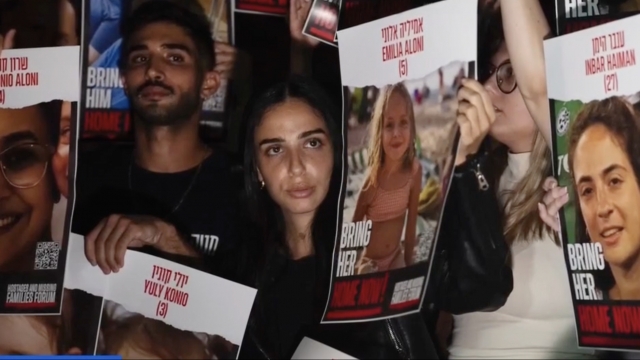Israel Defense Forces continues to increase the number of confirmed hostages in Gaza — which is currently at 222.
Each time these numbers are released is testimony to the efforts of a prominent Israeli information scientist and former University of Washington professor who now heads a critical situation room.
Karine Nahon leads a small army of Israeli techies. The prominent digital information scientist has brought together some of her country's brightest minds in a makeshift war room where they use advanced data algorithms and artificial intelligence to locate victims of the Oct. 7 terrorist attacks.
"It's hundreds of people basically working from technology to information to social networks. It's a very interdisciplinary space," Nahon said.
She said her group of 400 has been able to accomplish a great deal.
"We've been able to establish the status of hundreds of people and help the different security forces and government agencies," Nahon said.
Nahon said those important determinations were made for hostages, survivors and people who have been "slaughtered."
At this point, her team's focus remains on those still missing.
"We don't know exactly the situation of each one of them, but we know whether they're hostage or not," Nahon said.
Nahon said she's not willing to discuss whether or not she knows where those people might be. That's because secrecy is paramount.
With hundreds of lives on the line, the group doesn't want Hamas terrorists to know what they do and do not know, and what their custom-made algorithms are capable of discovering.
"We developed here a lot of algorithms that right now are not even in startups," Nahon said.
"Some of the algorithms actually compare different videos with different images, but in a very sophisticated level, in order to identify hostages," Nahon said. "Other types of algorithms try to identify and analyze voice, in order to understand and locate and analyze the situation."
SEE MORE: 2 US hostages held in Gaza have been released
Loads of material coming in from Gaza comes through social media and other networks.
"We get a lot of information," Nahon said. "This is our job, to get information."
This includes what Nahon calls "digital traces" — information from on-the-ground videos, photos and data being sent from phones and cameras.
"Although the pictures are not good, although the videos are not good, being able to process it and match it to videos with hostages, or in the streets of Gaza, and match [using facial recognition technology]," Nahon said.
"This is how we found one of the hostages going to the hospital. This is how we found some of the children," she said.
Nahon said she does not speak with family members.
Her role is to provide the intelligence generated by the war room to Israel's political, military and intelligence leadership — and they decide what to do with it.
She said she hopes the information is able to save lives.
Trending stories at Scrippsnews.com



